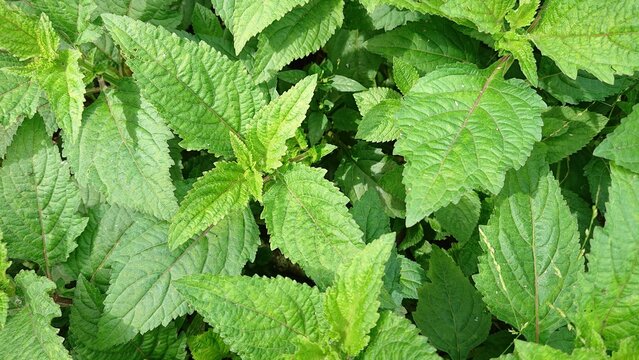
Introduction
In the realm of natural gardening, nettle(Kahabiliya,Wal kahabiliya) fertilizer and insecticide stand out as powerful allies for promoting plant health and warding off pests. Harnessing the potential of these organic solutions can elevate the vitality of your garden while minimizing the need for harmful chemicals. In this guide, we’ll explore the importance of nettle fertilizer and insecticide, as well as how to make and effectively use them in your garden.
Why Nettle Fertilizer and Insecticide Matter
Nettle fertilizer and insecticide offer a multitude of benefits for your garden. Nettles are rich in nitrogen, potassium, and other essential nutrients, making them an excellent source of organic fertilizer. When used as an insecticide, nettle-based solutions can effectively repel pests such as aphids, caterpillars, and mites, without harming beneficial insects or pollinators.
The Significance of Nettle Fertilizer
Nettle fertilizer, also known as nettle tea or liquid nettle fertilizer, is a nutrient-dense, organic plant feed that can greatly enhance the health and productivity of your garden. Here’s why it’s important:
Nutrient-Rich: Nettles contain essential nutrients like nitrogen, potassium, phosphorus, and trace minerals, which are crucial for the growth and development of plants.
Improved Soil Quality: Applying nettle fertilizer enriches the soil with organic matter, leading to better soil structure, increased water retention, and improved nutrient availability for plants.
Natural Pest Deterrent: The potent aroma of nettle fertilizer can act as a natural deterrent for certain garden pests, helping to reduce the reliance on chemical insecticides.
Cost-Effective: Producing your nettle fertilizer is cost-effective and reduces the dependence on commercially available fertilizers.

Creating Nettle Fertilizer
Crafting nettle fertilizer is a simple process. Follow these steps:
Ingredients:
- Fresh nettle leaves (be sure to wear gloves when handling)
- A large container or bucket
- Water
Instructions:
1. Collect nettle leaves: Gather fresh nettle leaves during the growing season, typically in spring or early summer. Remember to wear gloves to avoid being stung.
2. Fill a container: Use a large container or bucket and fill it with water. The amount of water required depends on the quantity of nettle leaves you have.
3. Add nettle leaves: Place the nettle leaves into the container of water. Use approximately 1 part nettle leaves to 10 parts water. For example, if you have a gallon of nettle leaves, use 10 gallons of water.
4. Soak the leaves: Allow the nettle leaves to steep in the water for about two to three weeks. Stir the mixture every few days to aerate it and facilitate the infusion process.
5. Strain and use: After the steeping period, strain the liquid into another container. The resulting liquid is your nettle fertilizer. You can further dilute it with water (typically using a ratio of 1 part nettle fertilizer to 10 parts water) before applying it to your plants.
The Significance of Nettle Insecticide
- Nettle insecticide, also referred to as nettle-based pest spray, offers an organic and environmentally friendly solution for managing garden pests. Here’s why it’s essential:
- Environmentally Friendly: Nettle insecticide provides a natural and chemical-free alternative to synthetic insecticides, minimizing harm to beneficial insects and the overall ecosystem.
- Cost-Effective: Producing your nettle insecticide is economical and sustainable, reducing reliance on expensive commercial products while maintaining effective pest control measures.
- Effective Pest Control: Nettle insecticide is proficient in controlling a wide range of common garden pests, including aphids, caterpillars, and mites, ensuring the health and vitality of your garden plants.
How to Make Nettle Insecticide (Kahabiliya)
Ingredients:
– Fresh nettle leaves (remember to wear gloves when handling)
– Water
– Organic, non-toxic soap
Instructions:
1. Collect nettle leaves: Just like with nettle fertilizer, gather fresh nettle leaves during the growing season, ensuring to wear gloves for protection.
2. Fill a container: Take a container and fill it with water, maintaining a ratio of approximately 1 part nettle leaves to 5 parts water. For instance, if you have a quart of nettle leaves, use 5 quarts of water.
3. Add nettle leaves: Place the nettle leaves into the water-filled container and allow them to soak for about 24 hours.
4. Strain the liquid: After the soaking period, strain the liquid into a spray bottle to remove any solid particles.
5. Add soap: Incorporate a few drops of organic, non-toxic soap into the strained liquid. The soap aids in the solution adhering to both pests and plants.
6. Spray on plants: Directly apply the nettle insecticide onto the affected plants, focusing on the areas with pests. Ensure to cover both the upper and lower sides of the leaves thoroughly. Repeat this process as necessary, typically every 7-10 days.
Nettle fertilizer and nettle insecticide serve as indispensable tools for gardeners committed to organic and sustainable practices. These homemade solutions offer various benefits, including enriching soil, fostering plant growth, and effectively managing garden pests. By mastering the creation and application of nettle-based products, you can significantly contribute to the health and productivity of your garden while reducing reliance on chemical fertilizers and insecticides.
Share via:

Pingback: Best Natural Method to Control Aphid in Garden -